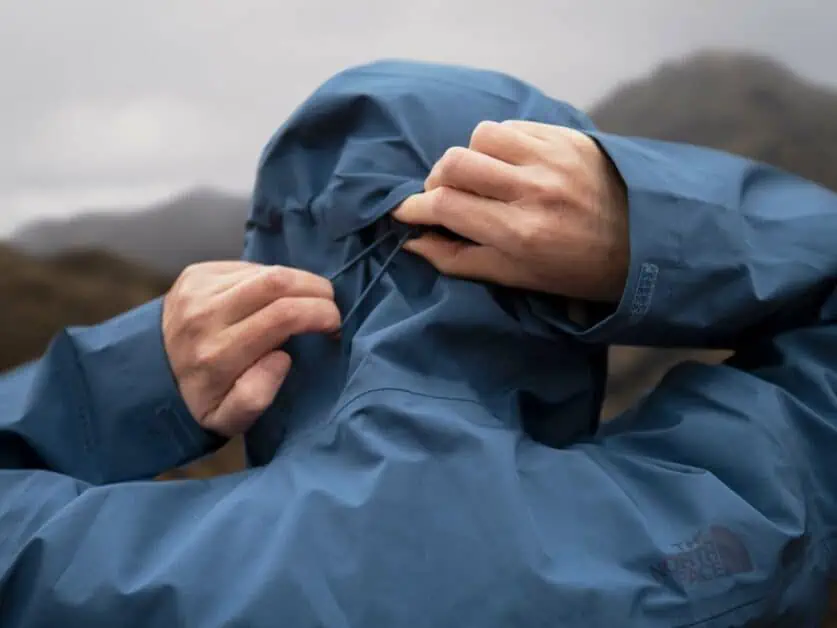
A rain jacket is an essential piece of equipment for the outdoors, especially if you live in, or hike in an area that is known to experience rain. So, getting it right for the conditions that you see yourself in is extremely important. Whilst manufacturers make lofty claims and wrap them up in often technical language that can be quite difficult to understand how that actually translates on the trail, we break this down to help you make the best decision for your hiking needs. All of the categories we discuss below are considerations you should make when choosing the right rain jacket for you, but it’s also important to look at the areas that are most important to you to make your decision.
Editor’s note: This article is part of our guide to the very best waterproof rain jackets for hiking, be sure to check out the rest of this guide for our top buying tips:
Table of Contents
ToggleTypes of Rain Jackets
When looking at our comparison table you’ll notice that our recommendations for the best rain jackets fall into a number of categories. Daily use, hiking and performance, with some being a mid-point (this is referenced as daily use/hiking for example). This is because rain jackets are designed for different purposes and different levels of rainfall and durability against this, as well as weight, packed weight etc. Here are the differences between them:
Performance: Performance rain jackets are highly specialized pieces of outdoor kit and are intended to be used as such (though that doesn’t mean you can’t wear them for everyday use too). What makes them stand out is that they are designed for the extremes you’re likely to find outdoors and are geared to a range of scenarios such as hiking, climbing, mountaineering and alpinism. You’ll generally find that rain jackets offered in the performance category make use of cutting-edge technique and materials to deliver great compromises between breathability, durability and waterproofing. This does generally come at a higher price point, but they tend to have a more luxurious and hardier feel. The Arc-teryx Beta and Arc-teryx Beta LT for all genders perform extremely well in this category.
Hiking: Hiking jackets are likely some of the most versatile in our round-up and whilst performance led jackets focus on specific activity, hiking jackets and shells hit that sweet spot in terms of price, waterproofing, packability and tech. Hiking rain jackets are generally made with the idea of being lightweight and something that would work just as well on a general hike as it would a backpacking trip. The Outdoor Research Helium Rain and The North Face Dryzzle Futurelight fare extremely well in this category. Just because these jackets are a step away from performance led, it doesn’t mean you aren’t going to get some of the best tech around (though you’ll generally find some of the cheaper models will make cuts to fit into a price point – and rightly so). This is certainly the case when it comes to ultralight jackets, which you’ll generally find sitting in the category of hiking. The Outdoor Research Helium Rain, referenced above falls neatly into this, sitting at 6.3oz, almost half the weight of the others in our roundup.
Daily Use: If you live somewhere that often gets wet (like we do) then having a good rain layer is likely something you’re well used to! Daily use jackets aren’t particularly short on features, and you’ll often find some nice additions like Velcro wrist sections to adjust the fit of the jacket. They often take into consideration that you may want to wear layers and come in a more relaxed fit, which can also help their comfort whilst wearing. That said, you will likely find that Daily Use rain jackets are not making use of the most cutting edge or the most lightweight materials and as such can affect their packability. These jackets can often be found at the slightly more budget end of the scale, but this shouldn’t put you off, and the daily use jackets we tested performed exceptionally well, especially the Columbia Watertight II.
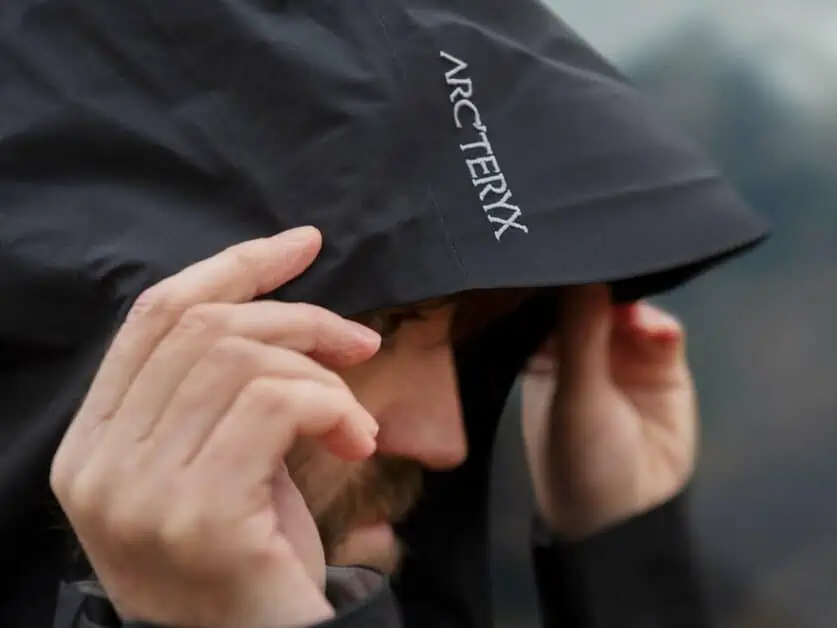
Rain Jackets v Hardshell
So, what is the difference between a rain jacket and a hardshell? A Hard Shell will offer the best kind of weather protection out there. Whereas a rain jacket provides a more lightweight option. Below, we’ve gone into detail about what to look out for and what defines them.
Weather Protection
Given that a hardshell is intended to provide significant protection against extreme elements, it offers the most weatherproofing out there. Waterproofing is provided from a 3-layer construction and the waterproofing sits in the mid layer. This is generally a membrane created using whatever technology the manufacturer works with. This can be Gore-Tex, Pertex, Omni-Tech, and many more (this can also be an in-house waterproofing system the manufacturer has developed). The outer layer on a hardshell is a thick barrier but maintains durability. They also have a water repellent finish which allows water to roll from the surface. The inner is a softer, more comfortable fabric that creates a barrier for sweat, moisture and other debris that could affect the waterproofing.
A rain jacket usually has 2 or 2.5 layers (more on that later) which allows for a more packable jacket and makes it more suitable in most circumstances for backpacking and longer hikes where you may not be wearing all the time. You’ll find a waterproof and breathable membrane, but it’ll usually be paired with a thinner fabric on the exterior of the jacket. With a 2 layer, you’ll find that the membrane layer will be next to the skin, whereas a 2.5 layer will have a thin layer of fabric between the waterproof membrane and skin which will add to both durability and skin feel but does affect overall weight.
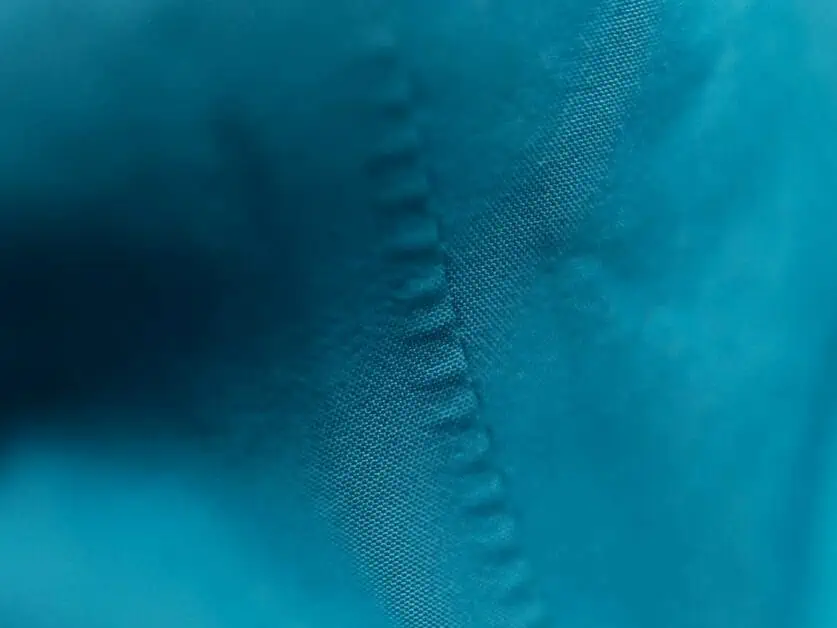
Breathability
Hardshells are generally the more breathable, and this comes from the 3 layers of fabric. Each layer does its own job, and together they work to create a very robust rain layer whilst also wicking moisture from the skin and providing air flow to prevent problems and itchiness. However, hardshell designs can lack breathability in certain areas. Rain jackets, especially as a 2.5L finish can be more breathable, but it really is about looking at your intended usage. For example you may want to take advantage of a jacket with 3 layer, or 2.5 that is lightweight and has pit zips or ventilation zips. The Arc’teryx Beta LT comes out well in this regard.

Weight and Packability
Traditional hardshell jackets certainly are at the heavier end of the scale and with that, they are less packable. If you know you’re going to be making use of your jacket in extreme situations or it rains an awful lot where you get outdoors, then it is likely best to opt for something that is on the heavier end of the scale, and if possible, at the higher price end (as this is where you will see the best combination of waterproofing, weight and features).
When it comes to rain jackets, this is where you’ll see some of the lighter options – for example, the Outdoor Research Helium Rain comes in at 6.3oz and the next most lightweight in our roundup is the Black Diamond StormLine. We believe that weight and packability should be judged based on where you plan to use your jacket the most – if you’re going backpacking and know there is only going to be a few downpours, then a full on hardshell mountaineering focused technical layer is likely going to be overkill and feel like it in your backpack.
Durability
It’s pretty important to note that all jackets, whether it’s a rain jacket or a hard shell will lose their durability against the elements over time, and the DWR treatment will not be as waterproof. This really goes for any piece of gear that uses this system and it can be made good again with regular washing or making use of a product such as Grangers Performance Repel Plus.
Of course, hardshells do have an advantage when it comes to durability on the whole – they can withstand the elements in the way they’re designed to. They can withstand most interactions with debris, rocks, sharp objects and more without any problem. However, rain jackets don’t always have this same level of durability. That said, this really shouldn’t put you off, as this doesn’t mean that rain jackets are flimsy, in fact very far from it. For example, The North Face Dryzzle Futurelight and Arc-teryx Beta perform extremely well in terms of durability.
Comfort
The level of comfort you feel from your jacket is one of the most important considerations we’ve made in our round up and in our testing. Simply put, the way you feel outdoors is going to make a big difference to your memory of the event! Generally, we’ve found that jackets that offer a 2.5 layer or 3-layer construction, which can be found in both hard shell layers and rain jackets offer the most comfort. These offer a softer layer against the skin, feel warmer and wick moisture (but this does of course come at a weight difference usually). Another area which is very important is stretch and having some room to move makes a big difference. That said, how the jacket cinches in different areas has a big impact on comfort too – for example, if the hood tightens in well. With this in mind, we really loved the Marmot Minimalist.
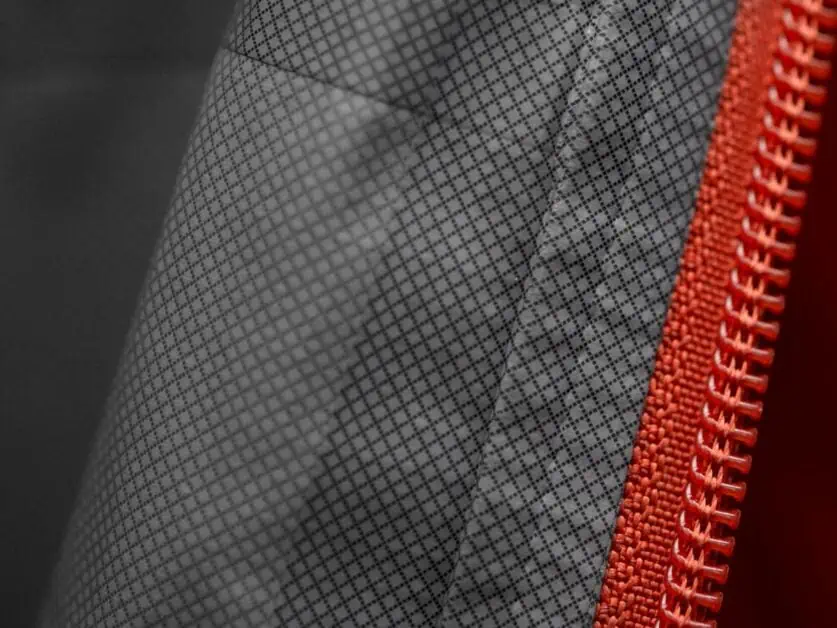
Sizing Your Jacket
Generally, you’ll find that the more technical the jacket, the more likely it is to be closer fitting, with less room for other layers. This is generally the case more so with hardshell layers, and you’ll often find that rain jackets can come with more shape to move. Sizing is a contentious issue within outdoors clothing that really needs to be addressed, and a lot of outdoors brands really need to get better at offering more sizes.
We’ve tried to offer a range of brands who offer smaller and larger sizes and offer past XL. However, sadly, this isn’t the case with some brands, and you’ll generally find that if a larger size is offered past XL, it’s in a men’s fit. If you’re in need of a larger size, it’s likely best to go with a men’s version of the jacket, as the sizing options tend to extend here.
Of course, if you’re buying your jacket online, it can be hard to look at sizing without trying it on before purchasing, but generally you’ll find that jackets that offer cinched wrist Velcro, and elasticated pulls around the waist are going to give the most flexible options. Generally, brands like The North Face and Marmot offer a roomier fit, whereas Arc’teryx and Rab can run a little on the small side.
Features
When it comes to features, the higher end (read expensive) the jacket, the more likely it is to make use of bells and whistles that you’ll really notice when outdoors. But is that really the be all and end all of a hardshell or a rain jacket? We don’t think so, and we think it really depends on your intended usage. Generally, you’ll find that a hardshell’s features will be more geared towards alpinism, extreme weather, climbing, skiing etc. Whereas a rain jacket is more featured towards hiking and general outdoors use. For example, hard shells may often have functionality in place to take a helmet under the hood whereas a rain jacket is more likely to allow a better packed size and weight. Don’t just look for what has ‘the most’ features, look at most of your applications and what features are actually going to make the difference for you.
Sustainability
When it comes to sustainability, of course the brands commitment to fighting things like wastage and making the most of non-destructive materials should be paramount. When researching the brands whose products we test, we are always committed to recommending brands whose commitment to sustainability is obvious. That said, there is more to it than that. Generally, most will say that the more you spend on a piece of kit, the longer it will last, and in turn, have a positive impact on its sustainability (i.e., needing to buy less stuff). This isn’t always possible, though – for a whole number of reasons, one being that you just don’t have the budget there to buy something that is at the upper end of the market.
Of course, no product is going to last forever, and as time goes by, newer products come out making some older technologies less attractive. It’s about looking at what you’re going to need your jacket for the most. For example, if you’re looking for something that will stuff in your pack and keep general usage at bay, opt for the best price point you can afford. If you’re wanting something more rigid, a hardshell or 3-layer system is likely to stand up to the test better for your needs.
Cost
Cost is likely to prove an important factor for you when buying a jacket, whether that’s a hard shell or a rain jacket. Off the bat, hardshell layers are typically more expensive than rain jackets, and given that they offer a more specialized solution are typically not going to be the best option for a lot of people. The most affordable option will come in the form of a rain jacket, and you’ll see from our reviews that we’ve kept a real mix of prices between the Columbia Watertight II at the lower end and the Arc’teryx Beta LT at the upper end. Are hardshells really worth the extra when it comes to what they give? Well, it depends on how you choose to use your jacket. It’s about looking at what will give you the best for the most you can shell out (no pun intended).
Fabric Layers
You’ll see in our comparison table, and at various times in our reviews we mention 2, 2.5 layer and 3 layers, but what does this mean and how can this help you decide which will be the right rain jacket for you? Below, we’ve explained what each of these means:
2 Layer
A two-layer rain jacket makes use of a waterproof membrane inner and often a lighter outer layer. This means that you will not have anything between your body and the waterproof membrane. This can affect breathability, but isn’t always the case, especially if the jacket has pit zips and other ventilation areas. Generally, 2-layer rain jackets tend to be the more budget options and can feel less comfortable to wear due to a lack of soft material. However, it really depends on personal preference. We’ve actually only offered up one 2L in our reviews, the Columbia Watertight II which is actually our cheapest recommendation too.

2.5 Layer
A 2.5-layer jacket is a hybrid if you like between a 2 layer and a 3-layer rain jacket. This design is actually becoming more and more popular, and you’ll notice that 6 out of the 10 jackets in our review fit into this category. A 2.5 layer sits in the middle between a 2 layer and a 3 layer and makes use of a much thinner fabric layer that sits next to your skin for a greater sense of comfort. The fabric that is used in this type of construction can lack the softness of fabric often used in a 3 layer but does generally make up for that in terms of packed weight and size.
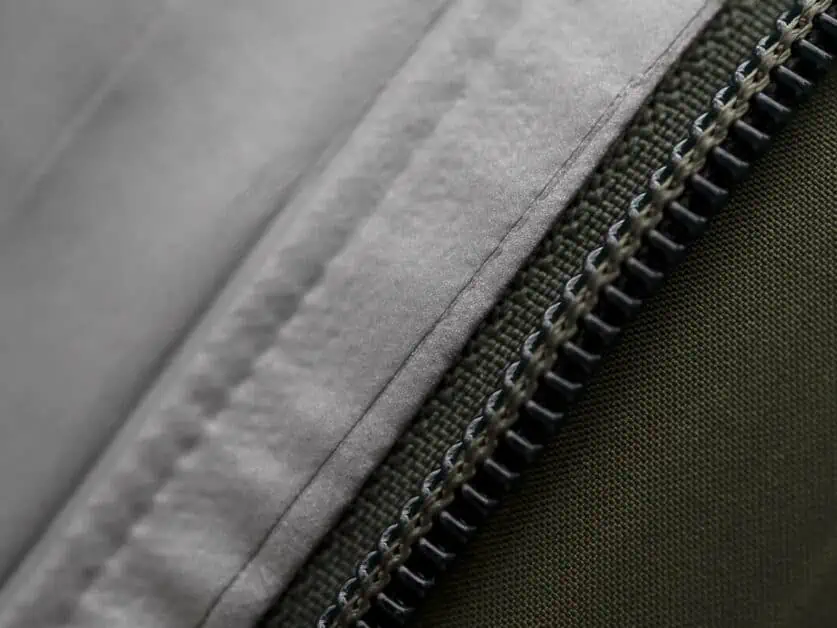
3 Layer
A 3-layer jacket makes use of, you’ve guessed it, three layers in its construction. It takes the waterproof membrane present in both 2 layer and 2.5 layer, whilst adding a much more durable inner layer and keeping the waterproof membrane in the middle. This adds well to moisture wicking when it comes to things like sweat and feels more comfortable against the skin. Generally, you’ll find that 3L jackets are on the pricier side, however, this doesn’t need to be the case all the time, which The North Face Dryzzle Futurelight proves, coming in at a mid-point closer to many of the other products we’ve reviewed.
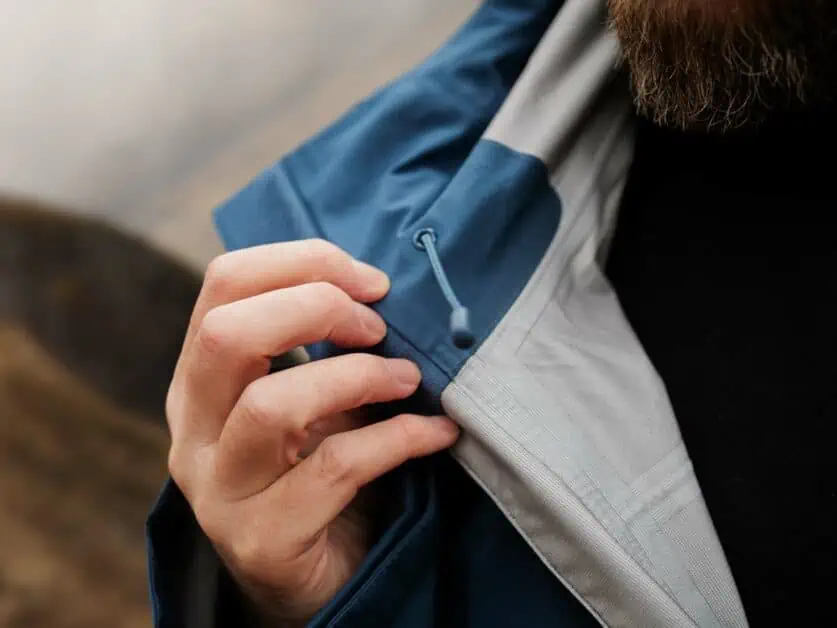
How Do Waterproof Fabrics Work?
Regardless of the kind of waterproof jacket you’re looking at, or in fact any waterproof clothing, the science behind waterproofing is the same and it is based on the process of diffusion. Diffusion, in terms of waterproofing moves water or liquid molecules from areas with higher concentration to areas of lower concentration, reducing saturation of specific points. Whilst waterproofing is the same, different materials create this in different ways.
ePTFE membranes with a PU coating
ePTFE or Expanded Polytetrafluoroethylene is a membrane that contains a lot of ‘microscopic pores’ per square inch – 9 billion in fact. The pores form a kind of sieve which are 20,000 times smaller than water droplets but 700 times bigger than vapor, which allows water droplets to be dispersed and things like sweat and vapor to escape. You’ll also find that the microscopic holes are paired and backed by a thin polyurethane (PU) coating, and this not only wards out things like body oils, sweat and other such things from coming into contact with the membrane. This PU coating is also the thing that blocks wind and makes the garment windproof.
ePTFE membranes without a PU coating
An ePTFE membrane without a PU coating removes the protective PU coating as seen above. This means that the pores on the membrane are left uncovered and able to ‘breathe’ more easily. Fabrics with this construction bring air in as well as pushing moisture out and to the surface. This flow of air is called convection as well as diffusion. A downside of this is that due to the lack of protection of a PU coating, the membrane can become contaminated with things like oils, dirt or other matter.
It is possible to keep this to a minimum by washing the garment frequently, and certain treatments can be added, such as an oleophobic treatment to the membrane, but this isn’t as durable as Gore-Tex, for example. Membranes without a PU coating may also create a greater cooling effect, especially at high wind chill but that said are still generally 90-95% windproof.
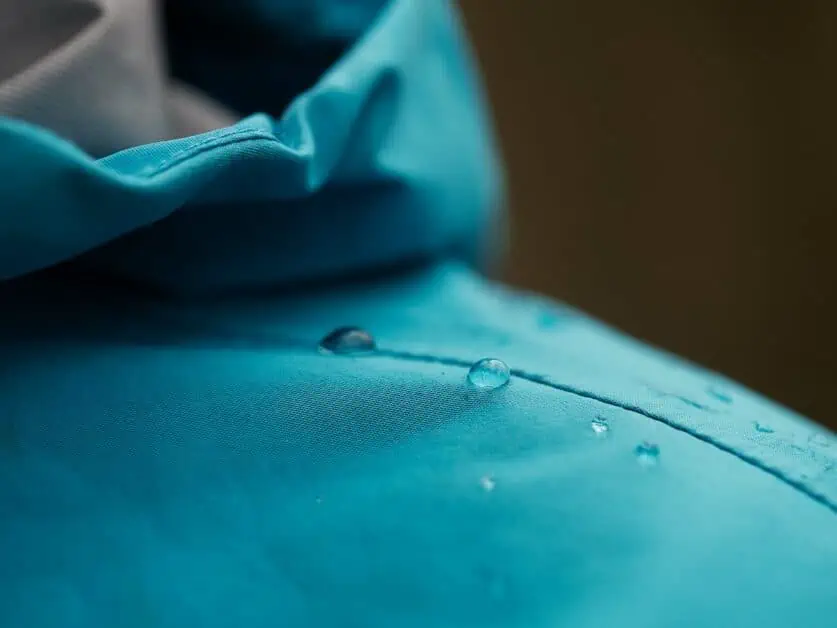
Construction
When looking at the construction of a waterproof rain jacket, you’ll find that a waterproof membrane sits in-between various layers of fabric, and the amount is dependent on whether the rain jacket in question is a 2, 2.5- or 3-layer construction (as discussed earlier). A 3-layer construction sandwiches the waterproof membrane between an outer layer and inner layer which provides protection to the membrane against the skin.
A 2-layer construction is similar to a 3 layer, but instead replaces the often thicker, higher end inner lining of a 3 layer with something much thinner, mostly to create protection for the membrane. A 2 layer removes the inner layer completely and does effect breathability and has more opportunity for the mid layer membrane to become contaminated. These are generally the cheaper options out there.
Durable Water Repellency (DWR)
Durable Water Repellency or DWR is vital to maintaining and prolonging the life of your rain jacket’s waterproof qualities. When your rain jacket is new, water will run off and form bead like shapes rather than permeating. This is because of the DWR coating on the jacket doing its job. If you don’t maintain your jacket, you’ll find over time that water will start to soak into the top layer fabric and this effects how moisture flows, and particularly the flow of moisture from the inside out. This can lead to you feeling extremely sweaty, or wet, but it’s actually because of trapped moisture rather than a leak. You can generally prolong the life of your jacket and keep it working as it is intended by keeping it as clean as possible and using a treatment specifically designed for DWR, such as Grangers Performance Repel Plus.
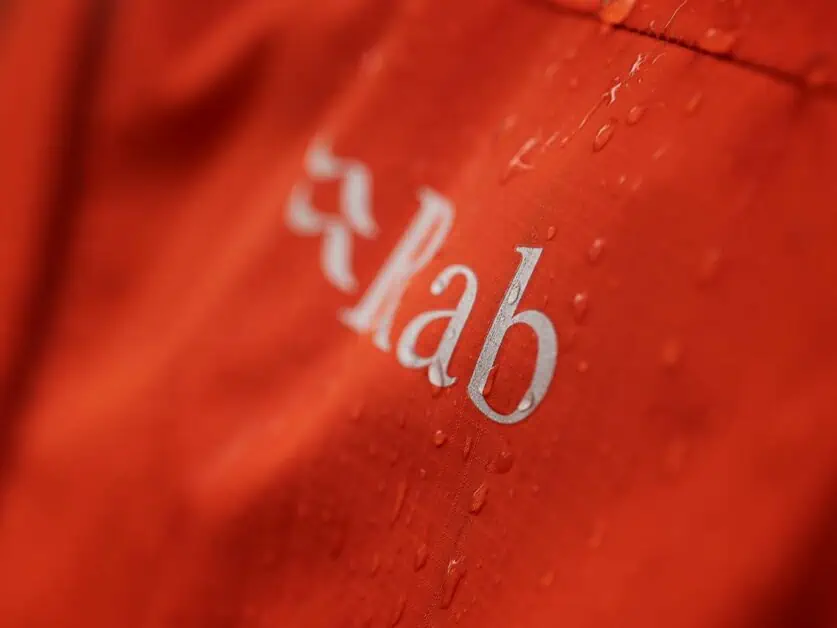
Seam Sealing
Seams create ‘weak points’ for water to permeate and get through, and these always need to be sealed to create a fully waterproof rain jacket. Most, if not all waterproof jackets on the market right now will use tape that covers the seams – this prevents water, moisture and other liquids getting in and out of the jacket, so the more tape is used, the less breathable it will be. The amount of tape also creates a more rigid and less flexible design, which in turn can make the jacket less packable and even heavier. You’ll generally find that the higher end the rain jacket, the less tape will be used on the jacket – this can be achieved by designing in such a way as to have less seams or using thinner widths of tape.
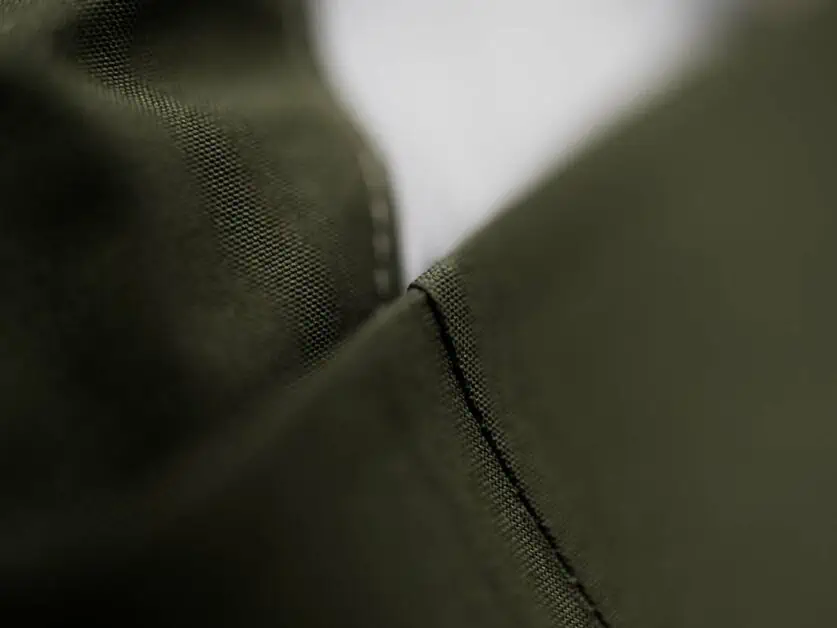
Performance
Performance is relative, and when it comes to waterproofing, it really is dependent on a number of factors (this also includes where you actually use the product, the type of fabric and pattern used, the individual jacket and taping, the number of layers. There is currently no industry accepted test, and all products are tested differently so it is better to put faith in actual hands-on reviews than just the manufacturers statements alone.
Waterproof Fabric Technology Explained
There are various waterproof fabric technologies on the market at present, and each have slightly different approaches. Below, we’ve gone into more detail about some of the most popular technologies used by the leading manufacturers whose products we’ve featured in our reviews.
Gore-Tex
Gore-Tex have a number of advanced technologies when it comes to waterproofing. Invented in 1969 and being improved ever since, Gore-Tex is a fabric technology that you will find in many waterproof products, and whilst it is a brand itself, they don’t make their own products for sale, it is only available in other manufacturers products. Generally, Gore-Tex is seen as one of the most premium, well-known products out there.
Watch Gore-Tex explained here:
Gore-Tex Pro
As the name suggests, Gore-Tex Pro is Gore-Tex’s premium offering when it comes to waterproof and breathable fabric. It is designed to be used in the most extreme of circumstances, such as mountaineering and alpinism environments. What set’s Gore-Tex Pro apart is its focus on both durability and breathability, making it incredibly suitable for those enduring extreme physical activity. The fabric consists of various layers of PTFE that is bonded to the outdoor ‘shell’ or material and a backing that is not PU, but instead a layer containing a gridded pattern. In order for a product to make use of Gore-Tex Pro, it must have a 40 denier, so you can expect that all products making use of this are rugged. It’s used by top brands, such as Arc-teryx, The North Face, Norrøna and Patagonia to name a few.
Gore-Tex Active
If you’re a backpacker looking for light layers, or a hiker who wants to keep things as light as possible, then Gore-Tex Active is a product to look into as it makes use of a backing being applied directly to the waterproof membrane creating a very breathable and usually lightweight product. Within this, products must maintain a minimalist approach (pockets are specified to be kept to within A4 paper size). The bonded backing material is usually softer next to skin and is well loved by fast packers and those who want to keep things as breathable as possible.
Gore-Tex Performance
You will find Gore-Tex Performance used in both 2- and 3-layer waterproof construction. They create a good balance between waterproofing and breathability and are great for use all year round, especially in fall or winter. Performance is generally more mailable, making it suitable for movement-based activities.
Gore-Tex Paclite
Gore-Tex Paclite is an excellent solution if you know that you are likely going to keep your rain layer in your backpack most of the time, and can be very useful for trekking, backpacking and longer journeys outdoors. Paclite fabric packs down small and is very light in relation to some other products offered on the market. The backing material is made of carbon and protects the waterproof membrane from contaminates so does not need a more traditional (and usually heavier) liner.
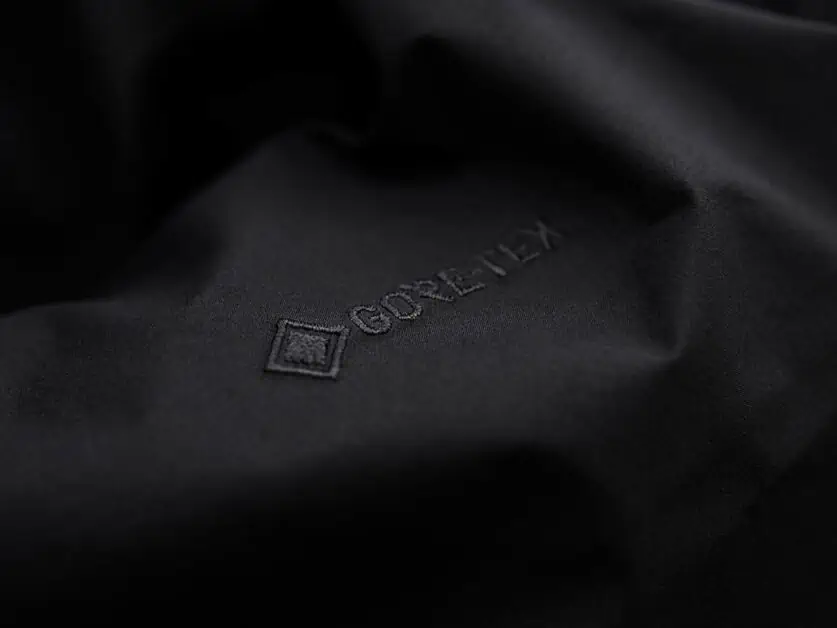
Gore-Tex Paclite Plus
Packlite Plus is a 2-layer construction. The inner layer is created using a treatment that protects from any potential harm the product is likely to face. This construction is easy to wear whilst providing excellent moisture wicking for high impact and fast activity such as trail running and fastpacking. It removes the liner entirely and creates a lightweight and packable solution for those wanting an extremely lightweight and small solution which is still waterproof and breathable.
Gore-Tex Shakedry
Gore-Tex Shakedry could be an excellent solution if you’re looking for a product to wear whilst trail running, fastpacking, or fast hiking as it is designed to be excellent at moisture wicking with a great comfort level against the skin. This technology removes the outer layer entirely, it increases breathability, and the membrane works as the weather shield creating something that is both waterproof and windproof. The inner uses a textured material that sits against the skin. This whole process allows for a product that is lightweight and packs down small.
Gore C-Knit Backer
This groundbreaking technology takes all of the hardy qualities you’ll see on a true hardshell 3 layer and give it the feel (and look) of a soft fabric. This material is exceptionally waterproof, whilst also allowing increased movement and is incredibly durable. This generally produces a lighter product and is perfect for hiking and fastpacking.
Gore Micro Grid Backer
Gore Micro Grid Backer takes Gore-Tex Pro technology and creates a woven lining that prevents damage inside as well as providing a highly breathable inner.
FutureLight
FutureLight is a technology developed for use with The North Face’s products and has been quite a disruptor on the scene in recent years. FutureLight presents a solution which allows products to look more like a traditional light jacket, whilst still providing excellent weather protection. It is also generally quieter (think swooshing sound) than Gore-Tex. It uses a method called nanospinning in which nano sizes fibers are created – this allows for exceptional breathability alongside it’s waterproofing.
Watch FutureLight explained here:
FutureLight Summit Series
This series of products are at the high end of FutureLight’s offerings in The North Face range and provides a tough, lightweight, and wearable solution to mountaineering, alpinism and extreme weather conditions.
Futurelight Flight Series
This technology is designed for those who want to go faster, such as fastpackers and ultralight backpackers, but don’t want to compromise on durability and weatherproofing. FutureLight Flight Series removes excess weight with minimal design without losing out on breathability.
Futurelight Steep Series
Steep Series is intended to be used primarily for backcountry skiing and cross-country routes and allows incredible breathability in a fast paced, extreme alpine environment.
DryVent
DryVent is another own brand product for The North Face and uses a PU coating and a 3 layer/multi-layer formula to provide waterproofing. It is used as a thin layer across the facing fabric of the product and is also treated with Durable Water Repellence (DWR). This allows for diffusion to do its job, taking the warmer air from your skin and moisture wicking, whilst keeping you dry on the outside. The North Face test their materials rigorously, and The North Face Venture 2 that we’ve reviewed makes use of this.
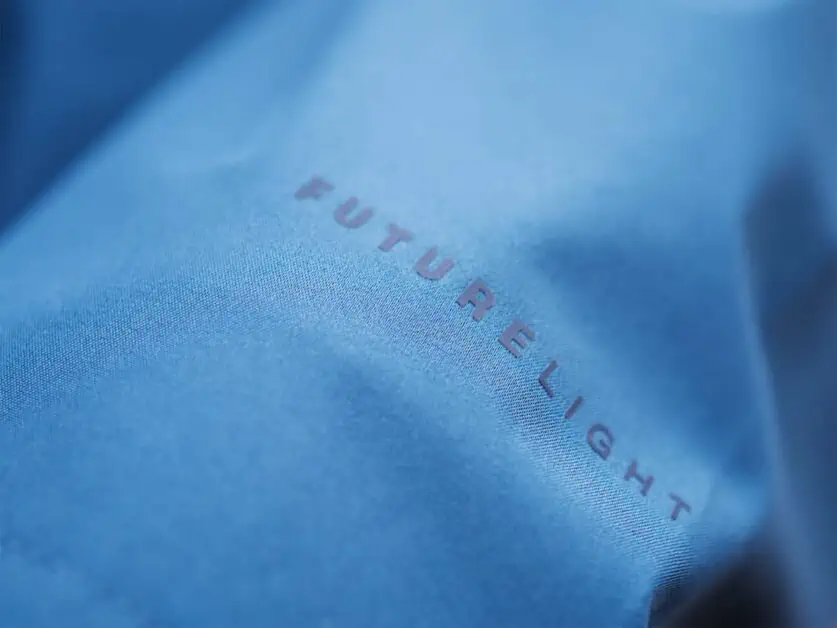
H2No
H2No is Patagonia’s in house fabric and presents a waterproof and durable fabric solution that is also breathable. Their H2No tests give a robust performance led certificate to all material, meaning it has gone through rigorous testing before it gets to the consumer. This is the same on all of their products, from top end shells through to everyday use rain jackets.
Watch H2No explained here:
Pertex Shield
Pertex Shield is made using a 3-layer laminate system and creates a waterproof and windproof layer that is highly breathable. It is created to be durable and also suitable for extreme conditions and prolonged use on things like mountaineering expeditions. It is particually useful against snow. It works in a similar way to Gore-Tex and makes use of a membrane with interconnected pores that allow moisture to be extracted from the fabric whilst keeping things dry from the outside in.
Watch Pertex Shield explained here:
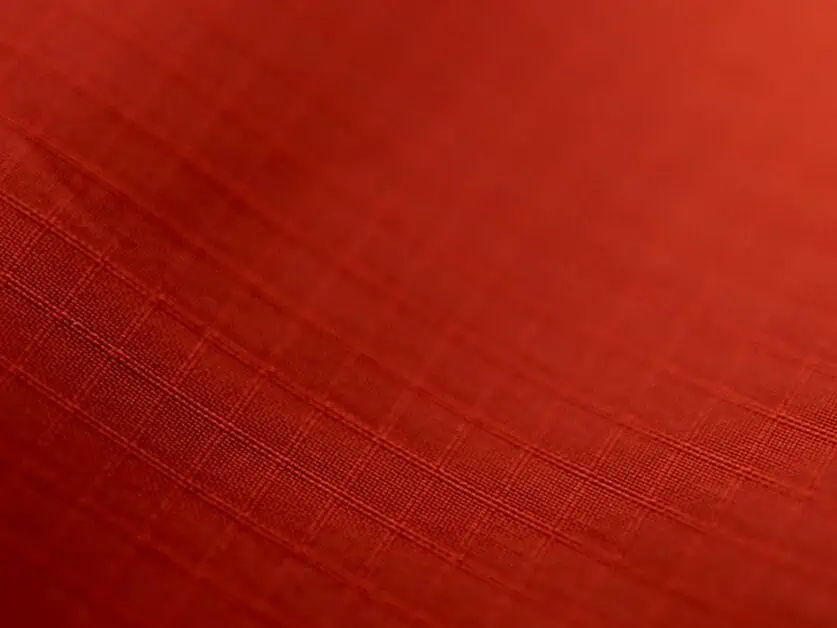
Tips for Using and Caring for Your Waterproof Rain Jacket
A rain jacket isn’t doing its job if it isn’t providing adequate waterproofing, and this can become less effective over time for a variety of reasons, from maintenance to the kind of environments it has been in for a prolonged period. There are some simple steps you can take to improve and care for the longevity of your waterproof rain jacket.
Cleaning
Cleaning your waterproof rain jacket is essential to keep it performing it’s best, alongside protecting the Durable Water Repellent (DWR) coating. This will work better when the jacket is clean, as it will allow for the clean fabric layers on either side of it to do their job of air vapor passing through. It will depend on the particular product you buy as to how often you will need to wash it, and can depend on a variety of factors, but you should be looking at once a month or so for optimum use. Treat your jacket gently when it comes to washing – keep it on a low heat cycle and use a liquid detergent.
You may also want to run it through again just to make sure all residue is removed. Some garments suggest it’s a good idea to put the jacket through a drying cycle to activate heat and reinvigorate the DWR, however some are better to be air dried. Always check the label, and if unsure, visit the manufacturer’s website for further details, which can usually be found in the product description.
Weatherproofing
If the DWR isn’t optimal, you may find that the jacket you’ve got isn’t so waterproof, or at least it doesn’t feel like it. It’s generally not because there is a leak, but instead, because moisture is not wicking properly as the fabric layers become clogged with water rather than rolling off. You may find it doesn’t bead up and instead pool up and soak into the fabric. You can really prolong the life of your waterproof rain jacket by treating it with a DWR treatment. This is something readily available, and we like the Grangers Performance Repel Plus treatment. This doesn’t mean there is anything wrong with your waterproof jacket, this is just something that happens over time as the coating becomes worn and is to be expected.
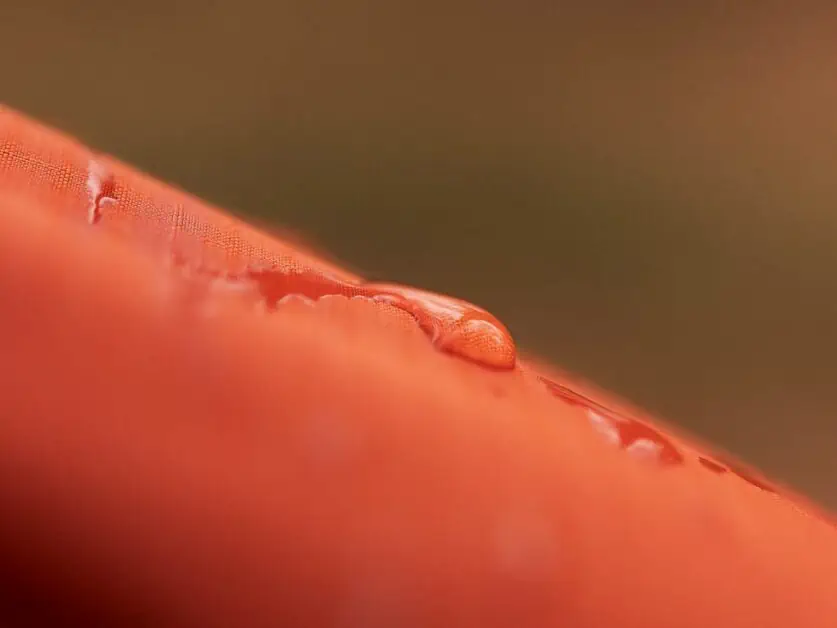
Conclusion
There are many things to consider when buying a waterproof rain jacket, and it can seem complex with endless products to choose from that make bold claims. In real world terms, technology and claims are one thing, and how a product performs out in the real world is the most important test. We hope we’ve broken down some of the jargon for you around choosing a waterproof jacket for your needs and made the decision-making process easier. For our main review of 10 of the best rain jackets on the market, visit our guide here.
Disclaimer: This article contains Affiliate Links. You won’t pay any more for buying through these links, but we may receive a commission from any purchases made through them. As an Amazon Associate, I earn from qualifying purchases. If you choose to support us by buying through our links, we thank you as it helps us to continue providing the resources we do to help you enjoy the outdoors more!
